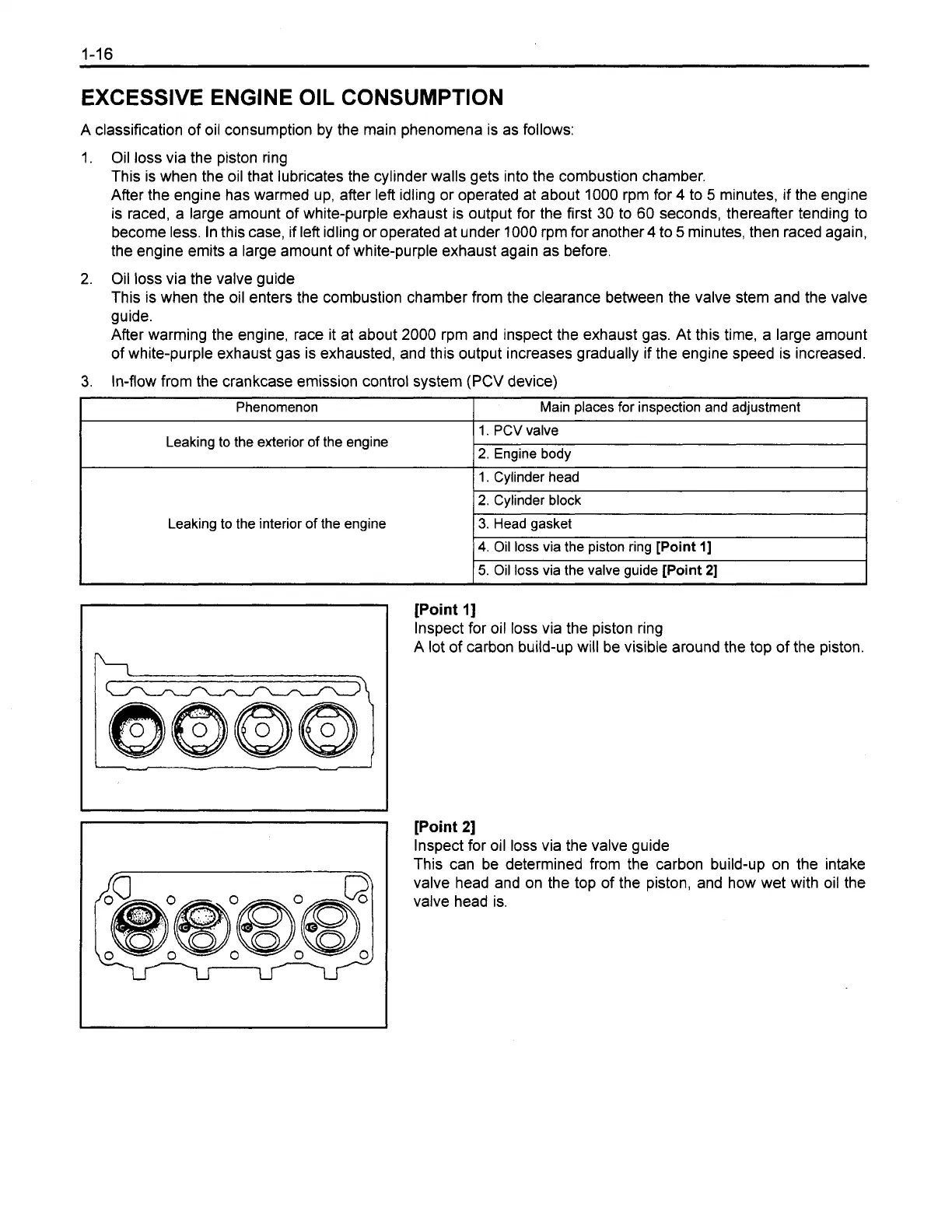EXCESSIVE ENGINE OIL CONSUMPTION
A classification of oil consumption by the main phenomena is as follows:
1. Oil loss via the piston ring
This is when the oil that lubricates the cylinder walls gets into the combustion chamber.
After the engine has warmed up, after left idling or operated at about 1000 rpm for 4 to
5
minutes, if the engine
is raced, a large amount of white-purple exhaust is output for the first
30
to 60 seconds, thereafter tending to
become less. In this case, if left idling or operated at under 1000 rpm for another4 to
5
minutes, then raced again,
the engine emits a large amount of white-purple exhaust again as before.
2. Oil loss via the valve guide
This is when the oil enters the combustion chamber from the clearance between the valve stem and the valve
guide.
After warming the engine, race it at about 2000 rpm and inspect the exhaust gas. At this time, a large amount
of white-purple exhaust gas is exhausted, and this output increases gradually if the engine speed is increased.
3.
In-flow from the crankcase emission control system
(PCV
device)
Phenomenon Main places for inspection and adjustment
1
Leaking to the exterior of the engine
(
I.
PCV
valve
I
12.
Engine body
I
Leaking to the interior of the engine
1.
Cylinder head
2.
Cylinder block
3.
Head gasket
4.
Oil loss via the piston ring
[Point
I]
5.
Oil loss via the valve guide
[Point
21
[Point
I]
lnspect for oil loss via the piston ring
A lot of carbon build-up will be visible around the top of the piston.
[Point
21
lnspect for oil loss via the valve guide
This can be determined from the carbon build-up on the intake
valve head and on the top of the piston, and how wet with oil the
valve head is.
